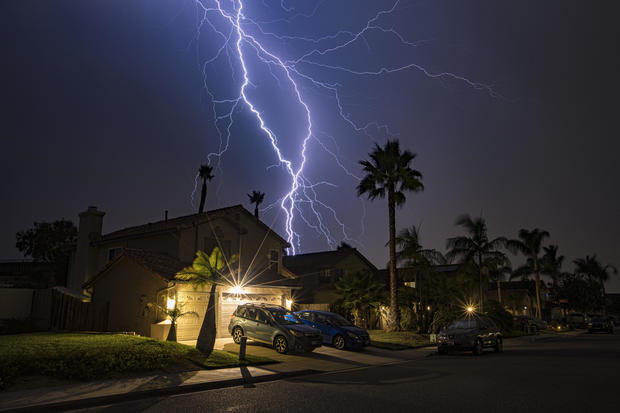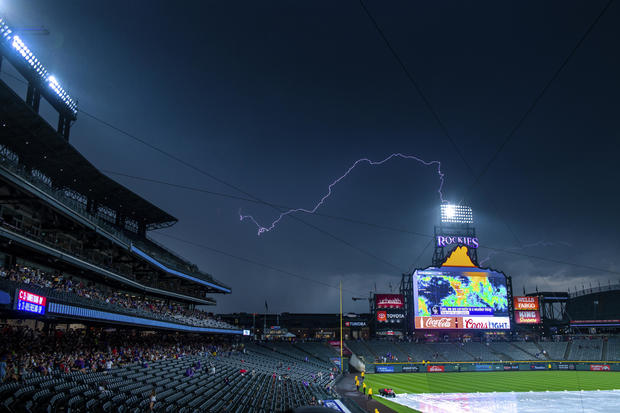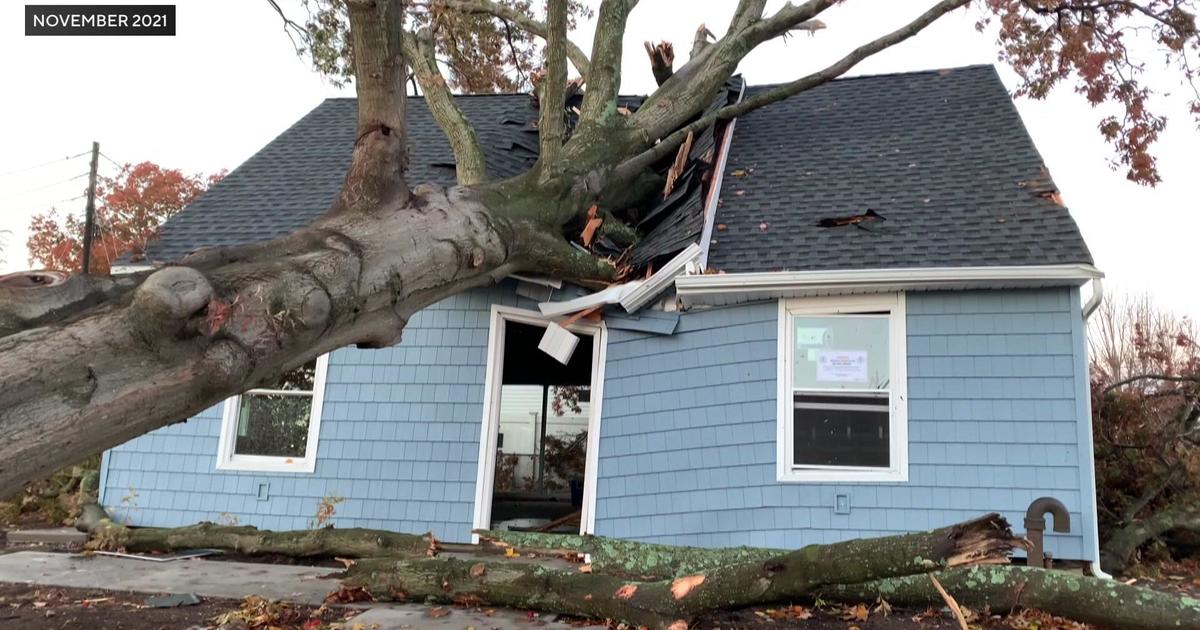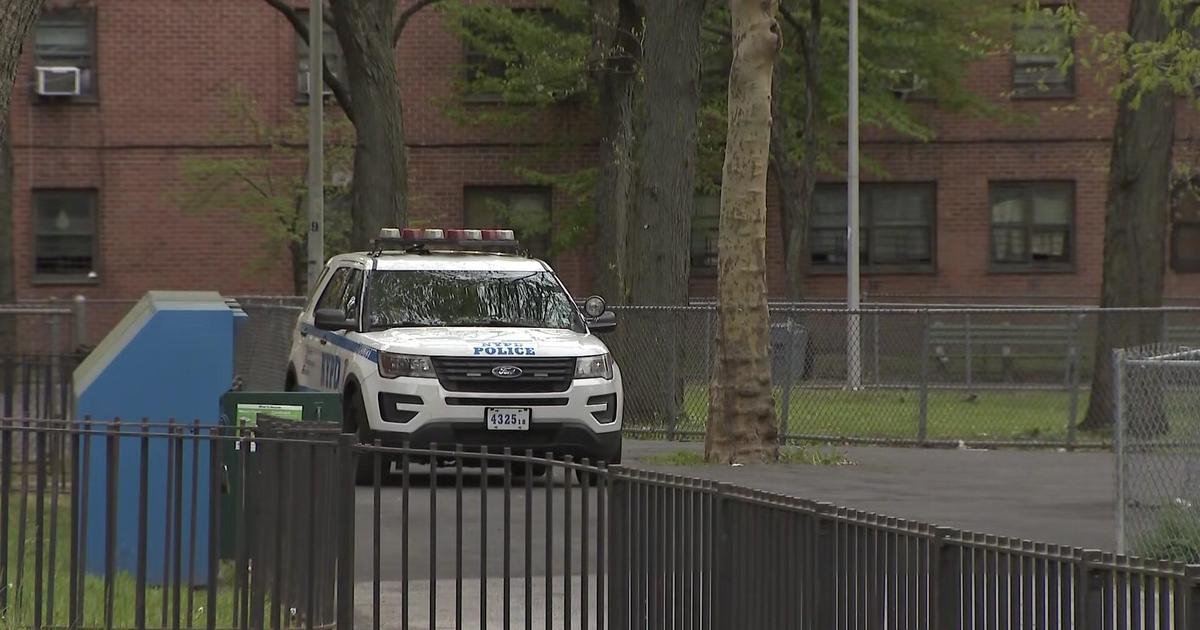Can you use the phone or take a shower during a thunderstorm? These are the lightning safety tips to know.
Growing up, you probably scoffed when your parents or grandparents would tell you to avoid taking a bath or a shower during a thunderstorm. After all, it's just an urban legend, right?
Wrong – it turns out that all those years of adults keeping you away from the shower during a storm were rightly cautious. As NOAA explains, lightning is "the first thunderstorm hazard to arrive and the last to leave."
"Because lightning is one of the most capricious and unpredictable characteristics of a thunderstorm, no one can guarantee an individual or group absolute protection from it," the agency says. "However, knowing and following proven lightning safety guidelines can greatly reduce the risk of injury or death."
Here are what officials say are the best tips to stay safe during a thunderstorm.
Is it safe to take a shower or a bath during a storm?
The CDC gives no wiggle room when it comes to this answer – "no."
"Lightning can travel through plumbing," the agency says. "It is best to avoid all water during a thunderstorm."
That includes not only bathing, but also washing dishes or even your hands at these times. The CDC says that plastic plumbing could reduce the risk of getting shocked by lightning during a thunderstorm, but the only sure way to prevent this type of shock is by avoiding indoor activities or chores altogether when thunder and lightning are brewing in the sky.
Can you use phones during a storm?
The answer to this question depends on the type of phone you are planning on using. According to the CDC, cell phones and other types of cordless phones are safe to use inside, as long as they are not plugged into an outlet. Corded phones, on the other hand, should be avoided.
What do you do if you're stuck outside in a storm?
When it comes to thunder and lightning, "no place outside is safe," the CDC says, emphasizing that above anything else, you should not lie on the ground outdoors.
"Lightning causes electric currents along the top of the ground that can be deadly more than 100 feet away," the agency says. "...If there are no safe shelters in sight, crouch down in a ball-like position: put your feet together, squat low, tuck your head, and cover your ears. But remember, this is a last resort."
NOAA also recommends immediately leaving any kind of elevated area, including hills and mountain ridges, and avoiding hiding under cliffs or rocky overhangs. You should also avoid any outdoor bodies of water.
Should you hide under a tree?
The short answer? No.
The CDC warns that seeking shelter under a tree during a storm is the second-leading cause of lightning deaths.
Does lightning hit the same spot twice?
Yes, it does. And despite the long-held myth, the CDC says that it can often strike in the same spot repeatedly – "especially a tall, pointy, isolated object." New York City's Empire State Building serves as a prime example, with the CDC saying that it gets hit by lightning about 23 times a year.
NOAA warns that "if you hear thunder, lightning is close enough to strike you." As soon as you hear the "boom," it's time to move indoors and follow the aforementioned tips for at least least 30 minutes after you hear the last crash of thunder.
Are men more likely than women to be hit with lightning?
As strange as it may sound, this is actually true. The CDC says that males are "four times more likely than females to be struck by lightning," with most victims being those who are more regularly engaging in outdoor activities, most notably, construction workers and farmers.
But the overall odds of being struck are slim – just a one-in-a-million chance any given year, the CDC says. It's estimated that about 180 people get struck by lightning every year, with about 10% of those people dying from the incidents.
Those in Florida, however, are at a slightly elevated risk, as the state is known as the "lightning capital" of the U.S. It had the most lightning deaths in the country last year – four out of 19 total – and has had more than 2,000 lightning injuries within the past half-century.
Will you be electrocuted if you touch someone who was hit by lightning?
It's perfectly safe to touch someone who was struck by lightning – and is encouraged if that person needs immediate first aid. Despite a popular misconception that touching someone who has been struck will administer a shock, lightning victims don't carry any electrical charge, the CDC says.







